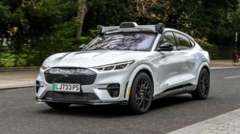Uber has announced its intention to begin trials for driverless taxis in London by next spring, a move that accelerates its previous timeline amid updated legislation from the UK government. The ride-hailing service will partner with the AI company Wayve, which has been piloting its autonomous vehicle technology on the city's streets, albeit with human operators overseeing the rides.
Initially aiming for driverless cars to appear on British roads by 2026, the UK government has now shifted its timeline for "bus and taxi-like" commercial services to commence sooner, indicating a regulatory environment that is more supportive of autonomous vehicles. While it remains uncertain if these autonomous taxis will be made available to the public during the trial, Uber has expressed its commitment to integrate the service into its app once given the green light by regulators.
Projected benefits from the autonomous vehicle sector include the creation of 38,000 jobs and an estimated boost of £42 billion to the UK economy by 2035, according to the Department for Transport. However, some experts, like GMB national secretary Andy Prendergast, have cautioned about the potential social challenges associated with driverless technology, particularly regarding its impact on employment.
Uber has already launched a robotaxi service in Austin, Texas, offering service without a human driver for up to 20 hours a day. Customers there can choose robotaxi rides, with no difference in pricing, as competition heats up with Tesla set to launch a similar service shortly.
Globally, fully autonomous vehicles have logged millions of miles, operating in countries such as China, UAE, and Singapore. While initial studies indicate that driverless cars may be less prone to accidents compared to human drivers, the rollout has not been without issues—robotaxi incidents have raised safety concerns, leading to service cancellations in some areas.
A previous experience with Wayve's autonomous technology involved a fitting-out Ford Mach-E that successfully navigated London’s busy streets without input from the human safety driver. The vehicle, equipped with sensors and an AI system, handled various urban hazards efficiently, suggesting that when executed properly, autonomous driving may offer a safer alternative to traditional driving methods.
Stay updated on tech developments and emerging trends by subscribing to our Tech Decoded newsletter.






















